What is the Best place in Texas for growing Fruit and Vegetables?
Okay. So I have lived in Jones county Texas for the last 11 years on 20 acres. In those years I have fought an endless battle to try and produce my own food. I have had little success. It seems like all of nature is fighting me with everything it has got. I could write a large book on all the things I have tried and how they have failed miserably, because of one element of nature or the other. I have spent tens of thousands and worked myself into the ground and I have nothing to show for it. I have had it! I am selling out starting over somewhere else while I still have the chance and strength to do so. My question is, WHERE?
I did not choose to come to my current location; the land was given to me. Now I know why! But now, I want to choose where I move to. I want to make this choice off of firm research and facts. I am hoping I can get some of that here from people who share the same passion as I.
So what I am looking for? I am looking for the best region of Texas that is the most FAVORABLE for growing the widest variety of of fruit and vegetables. I know that you can grow just about anything, just about anywhere, with enough work and investment. But what I am looking for is the region of Texas where it is EASIER and more Favorable then others.
I am basically looking for a new Homestead, where I will live till I die. I want to produce most of my own food, from fruits and veggies to, meat eggs and milk (goats).
This is a huge life decision for me and I would appreciate some really good advice on helping me decided where to start this journey. Thanks in advance.
Comments (45)
southofsa
6 years agoI'm in the San Antonio area - I wouldn't recommend it for what you're looking for. If I had to throw out a recommendation I'd say somewhere where they actually get rain- maybe the eastern part of Texas? Someplace far enough from the coast that you don't get the storms. But again, I've never lived there.
Lisa
The Jungle Explorer thanked southofsaUser
6 years agolast modified: 6 years agoYour best resource would be going straight to the top: contacting Texas A&M ag dept. They’ll have the most info/charts/etc regarding each area’s rainfall patterns, soil types, freezing temp info, fruit and veggie crops, drought patterns, and on and on. (And of course, as you start to narrow down your search, you can contact each county’s extension office for info, too.)
https://agrilifeextension.tamu.edu/contact/
https://agrilifeextension.tamu.edu/browse/featured-solutions/crops-soil/
I know there are several forums here on GW for this topic, but I’ve not read them much, and don’t know how many Texans post on them. Might be worth a look.
My area is pretty diverse in crops (Parker, Johnson, Wise, Erath, Tarrant, Denton, and other counties), but land is extremely expensive, and becoming more and more urban. Finding anything under 10-15k an acre is nearly impossible. People have crops of pecans, watermelon, various veggies, grapefruit, apples, strawberries, blackberries, wheat, cotten, peanuts, peaches, pears, etc ... too many veggies to list. It’s usually too cold for some citrus, like lemons and limes. But in my specific town, even on one piece of property, there are different soil types, pockets of weird weather patterns, etc. Ranching (livestock) is very prevalent here, too, but you can raise cattle and goats just about anywhere. I’d certainly want land with deep, natural stock tanks and an area for growing coastal hay (coastal is fairly easy to grow and adaptable to sands and clay both, in my experiences).
On this very general map, I’d keep my search in the yellow (southern to east portion), green, and blue areas. But that’s just based on my limited knowledge of Texas food crops, and again, since this is such a big life change/investment for you, I strongly suggest you contact the scientific experts above.
 The Jungle Explorer thanked User
The Jungle Explorer thanked UserRelated Professionals
Medford Landscape Contractors · Chesapeake Ranch Estates Landscape Contractors · Clayton Landscape Contractors · Dallas Landscape Contractors · Kaneohe Landscape Contractors · Lees Summit Landscape Contractors · Lewisville Landscape Contractors · Melrose Landscape Contractors · Soddy Daisy Landscape Contractors · Yukon Landscape Contractors · Shafter Landscape Contractors · Framingham Window Contractors · University City Window Contractors · Hialeah Gardens Window Contractors · Elkridge Window ContractorsCarla
6 years agoThe soil in the area around Hempstead is pH neutral so you can grow a wide variety of plants. I know there at least one large truck farm there that sells to HEB and others. If that area itself it too expensive per acre, you might research the soils to the north nearer Navasota and see if the pH is still in the neutral range.
The Jungle Explorer thanked CarlaThe Jungle Explorer
Original Author6 years agoI am Jones county, just four counties west of Parker county and fruit tree here are a complete waste if time. I planted 48 back in 2010 off everything sold at the local nursery (apples, peaches, plums, apricots, figs, etc.) and even with a $1000 automated watering system, most of have died and only a couple peach varieties have produces any fruit. I used a backhoe to plant them and dug out a 4 foot by 4 foot square hole that I filled with excellent top soil, to give them the best soil to grow in. It was a massive investment, and it has produced squat in this region.
Parker is only four counties East of Jones and on the same growing parallel. Doesn't the normal late freeze pattern effect the fruit crop their? All my trees are bloomed out right now, but I normally get a late freeze around the first of April that kills all the blooms.
User
6 years agolast modified: 6 years agoI can only remember a couple of times since we’ve moved here, that late freezes took the peach crops (the big thing in my county). I was just at the Farmer’s Market last week, and the fruits/veggies all looked great this year. But I don’t recommend my area (was just describing it in my other post) ... too pricey for what you get! Especially as taxes keep steadily rising (of course you can file ag-exempt in some cases).
I doubt there are any other states with conditions as unpredictable and diverse as Texas! That’s why I think contacting A&M would be very helpful for your research. :)
The Jungle Explorer thanked UserThe Jungle Explorer
Original Author6 years agolast modified: 6 years agoThanks. That is good to hear about your area. That is a nice area. I have been to the Mineral Wells State Park several times and I like that area. Prices are high all over Texas, except where I live. Here in Jones county, you can buy unimproved land for around $500 an acre if you keep an eye open. $1000 an acre you can get any day of the week. There is a 250 acre ranch being sold just south of me for 200K. The land next door to me has been up for sale for five years. It's 280 acres with a 3000 sqft 5 bd/3br brick home, multiple outbuildings, water rights and some mineral rights, all for 400K and no one will touch it with a 10 foot pole. I manage the deer on it and we have harvested bucks that went over 225 pounds, but not even that can get people interested in buying it. You almost have to pay people to come here. I am only here because I was given the land I am on, by the ranch next door, if I would just move here. If knew then, what I know now, I would have turned it down. LOL!
Most of the land I looked at last week in Southeast Texas ranged from 10K to 20K an acre for unimproved land. Put a house on 10 acres and it was pushing 300K, and I am talking about a Manufactured home, not a frame or brick house.I did find some properties with 20 acres with a house for under 250K, but all of them had problems. In most case the houses were in bad shape and needed a lot of repair and the land was bottom swamp land and the house was on the only high spot, or the land was I on a steep slope that made it unusable for most purposes.
Of course, you can't see these things from pictures and that is why I drove 2300 miles last week to see them in person. Of course I was studying the areas and talking to the locals about my goals as well. Also, I know southeast Texas used to be a really racist and since I am interracial married, I was really watching carefully how people reacted to me and her being together. I could not give a rats behind what people think, but my wife is very sensitive to these kinds of things, beings as she is the only one of her race in the whole country. Fortunately, I think that area has changed a lot as everyone I met was super nice and I detected absolutely no sign of racism from anyone we met are were around in restaurants, hotels and stores. That is really encouraging.
But at the end of the day, I did not see what I hope to see in Southeast Texas. I drove 2300 miles and crisscrossed that area from Houston to Louisiana and from Beaumont to Palestine. It is very pretty over there I must admit. But the one thing I did not see anywhere, not one single one, was a fruit tree or a garden of any kind. I did not see a roadside fruit or veggie stand either or signs for local grown produce, or eggs, goats milk, cheese etc, etc, etc. I am not saying they do not exist, but they must not be very popular in that area. Now, you go over to the Fredericksburg area or the Southern Valley area of Texas and you will see those things everywhere.
I also walked many hundreds of acres of land and all of it was like walking on a sandy beach on the ocean. I honestly have no idea how good it is for growing food crops, it just seems like if it was a prime place for that kind of thing, their would be a lot more people doing it there. Honestly, I can't say I saw much agriculture of any kind in southeast Texas; and I was looking carefully. I saw no crop production at all (Industrial or Small Farm). The only thing I saw a lot of was pasture and cattle. I think I saw one small goat farm with 40 or less goats East of I-45 on the whole trip. But once I got over in to the Lampasas Texas area, there was nothing but goat farms.memetexas
6 years agolast modified: 6 years agoUnless you have irrigation of some type since Texas gets so hot in the summers I don't know how anything but grass would grow. If you start heading to the south you will see irrigation canals (from the Colorado River) that farmers will pump water from and in the areas where rice is grown, they will drill many water wells to flood the fields. LCRA is the Lower Colorado River Authority. They're the ones who decide how much water farmers get and their crops are based on that allotment of water. There are huge sprinklers that water commercial growing operations too. But in south Texas there are thousands and thousands of acres under cultivation with produce. In the Rio Grande Valley there are citrus groves everywhere but I'm sure they have to water there too. That's why water rights are so important.
On the acreage, most areas you will pay more per acre for smaller tracts of land.
The Jungle Explorer thanked memetexasdaninthedirt (USDA 9a, HZ9, CentTX, Sunset z30, Cfa)
6 years agolast modified: 6 years agoI'd get a soil test and figure out exactly what you're up against. Otherwise, you're just shooting in the dark. If the issue is keeping things wet enough, that's about irrigation engineering, and not about location. Beyond that, as noted, A&M extension can give you excellent pointers about what grow well and what doesn't.
You could start here.
https://www.nrcs.usda.gov/Internet/FSE_MANUSCRIPTS/texas/jonesTX1972/jonesTX1972.pdf
You don't say anything about your gardening techniques. If you bore an average hole in average ground and drop a seed in, no, it probably won't do all that well. Do you fertilize? Do you amend with compost? Do you till deeply? Is your soil pure clay or pure sand?
The Jungle Explorer
Original Author6 years agolast modified: 6 years agoThis thread is about where to move to and not about where I am at. If you go back to my original post and read it, I said;
"I could write a large book on all the things I have tried and how they have failed miserably, because of one element of nature or the other. "
I am not trying to figure out how to make things work here where I am at. I have wasted 10 years here doing that. Can I make thing grow here by sheer will to do so? Of course! But I cannot live by the law of survival here, which is, Economy of Motion. Economy of Motion is a law that dictates that in order for something to be worth doing, it must Produce more then it Consumes. I have spent enough money, work and resources on trying to grow things where I am at, that I could have bought the the best organically grown produce for the rest of my life and had money left over.
Bottom line is, you can grow anything anywhere with enough time, expense and effort. You could grow bananas on the North Pole with enough expense and effort, but that does not mean that the North Pole is a great place to grow bananas! As I said in my original post;
"I am looking for the best region of Texas that is the most FAVORABLE for growing the widest variety of of fruit and vegetables."
I am NOT looking for a place where it CAN be done. I am look for a place where it is FAVORABLE to be done. Jones county Texas is not a FAVORABLE place to grow fruits and vegetables. Do you want proof of this? Well, here you go; in 11 years of living here, I have not met or seen one single other person who grows anything but grass and cotton here, and even the cotton crop fails most years. When I went to the County Extension office years ago and asked them about growing fruits and vegetables here, this was their responds, word for word;
""When you figure it out, please let us know. We will give you a class of your own here and you can teach us how to do it."
I used to live in the mountains of Veracruz, Mexico, back in the 1980s. There were subsistence farmers that lived in remote mountain villages that would bring their produce down to the town I lived in to sell on the street. These people were very primitive farmers that had no modern anything and raised everything by hand organically. You will probably not believe me when I tell you about their produce, but I once bought a single head of cabbage that weighed 20 POUNDS! Carrots in the 3 lb range were normal. I have bought red radishes that were over 3 feet long.
That climate is so favorable to grow things, that the call it, "The Land of the Living Fences". They call it this because all you have to do to grow a tree, is cut a branch off and stick it in the ground, and it will grow a tree. There are cattle ranches that have a fence around 1000 acres made up of nothing but living trees planted so close together that they form a solid wall. Now that is a FAVORABLE growing environment. I know that nothing like that exist in Texas, or probably anywhere else in the world for that matter, but there are regions of Texas that are significantly more favorable then others, or at least I sure hope so.
The Jungle Explorer
Original Author6 years agoApples, Peaches, Plums, Apricots, Pears. That kind of fruit. I am not looking to grow citrus.
Irving Ragweed (Austin 8b)
6 years agoMy cousin's husband is from the Abilene area. His family makes a good living growing hay, lots of hay and nothing but hay, because no other crop is reliable. Reliability seems to be the key issue all across the state. Peaches and goats are common in the Hill Country because little else can be raised there. DW's extended family grows peaches in Gillespie Co. Without the river water they pump on their orchards, they would never have a crop, and that water is closely regulated by LCRA. Even then, peaches are not 100% reliable. As insurance against a bad crop, they lease their land to deer hunters. As interest in goat herding increased, so did the demand for a nocturnal guard dog that puts fear in the hearts of coyotes, specifically the Great Pyrenees. The GP performs admirably from October to April but, being a cold weather dog, it becomes a high-maintenance if not downright lethargic animal in the summer. If your GP is sleeping on the job, coyote-proof fencing might keep the predators at bay. Either way, producing fromage de chevre in Texas could be a frustrating enterprise if Economy of Motion is a priority. There's a reason why Texas has only 4,000 acres devoted to viniculture compared to Monterey Co., CA's 40,000 acres.
The Jungle Explorer thanked Irving Ragweed (Austin 8b)mistiaggie
6 years agoMay I suggest going go the All Things Plants Forum/Garden.org and talking to the folks there? Dave---Dave's Garden "Dave"---lives in east Texas and farms there. He grows with permaculture techniques and would be a good person to get advice.
For what its worth, digging huge holes and ammending the soils for trees is considered bad advice now: https://s3.wp.wsu.edu/uploads/sites/403/2015/03/soil-amendments.pdf
I think the Nacogdoches/Lufkin area or vicinity would be where you would be interested in going.
As for road side farmers markets, you can see people selling watermelons on the side of the road in the summer. I'm sure it might have been too early for the typical fruit crops to be out.
And maybe, if you end up stuck on your land for several years until you find a place you can afford, I would look into permaculture and building the soil that way. The Permies website would be helpful.
Also, what's sold at the local nursery might not even be what you really need for your area. Many garden centers aren't stocked appropriately for local growing.The Jungle Explorer thanked mistiaggieCarla
6 years agoIf I were looking, I would take a map and draw a triangle between San Antonio, Waco and Houston. Stay west of 45, east of 35 and north of 10. When I was a kid I knew people who grew lots of vegetables in Milam county. It has blackland on the west and sandy soil to the east. Also explore the areas around Brenham toward Hempstead--basically the Brazos River areas. Outside of the triangle I also know of a family with a commercial sod business based SW of Houston and a family that had a commercial tomato operation outside of Fredericksburg. Soil Map and another from the Texas Almanac. Texas Almanac map
The Jungle Explorer thanked Carlaloreleicomal
6 years agoOn a Texas gardening Facebook page, one member posted pictures of her acreage in Texhoma. She grows flowers that she sells at the local farmer’s market. Everything looked lush, green and productive.
garybeaumont_gw
6 years agoI think if you stay in the central Texas east of I 35 you would be more successful. Tyler area is know for growing roses and has peach farms, and Jacksonville was known as a great place to grow tomatoes. I would look for places that have fruit farms. Soils will be very important. Being on land with poor soils can spell disaster.
I use to live in Haskell just north of you. My neighbor had an apricot that made nearly every year. In some areas you could grow a good garden, in other areas with deep sand or tight clay it would be hard. But I will admit that in that areas nature can attack from many ways, from too hot, too cold, hail, high winds. But any area will have its problems.
Find land that has sandy loam and drains well. Soils can really make or break a place. You can find the soils type by going to web soil survey. Find the soils for a successful peach farm and see if you can find a place with the same type of soils.
bjb817
6 years agoMy in laws live in central Louisiana, which has a similar climate and soils to much of east Texas. They successfully garden and grow blueberries, figs, grapes, mulberries, satsumas, persimmons and grapes as well.
Where I don't recommend is here in central TX, at least west of 35. Droughty with rocky soils.The Jungle Explorer thanked bjb817sabalmatt_tejas
6 years agoI agree with the SE Tx area recommendations for growing fruit and gardens. The soil ph and rainfall there are so much better than areas W & N. I’ve seen some wonderfully happy plants in that area- Brenham- Nacogdoches- Tyler to just N of Beaumont. Stephen F Austin University in Nacogdoches is a great resource for seeing what’s possible in that area- both online and at their beautiful arboretum & Gardens.
The Jungle Explorer thanked sabalmatt_tejasThe Jungle Explorer
Original Author6 years ago"My cousin's husband is from the Abilene area. His family makes a good living growing hay, lots of hay and nothing but hay, because no other crop is reliable. Reliability seems to be the key issue all across the state. Peaches and goats are common in the Hill Country because little else can be raised there. DW's extended family grows peaches in Gillespie Co. Without the river water they pump on their orchards, they would never have a crop, and that water is closely regulated by LCRA. Even then, peaches are not 100% reliable. As insurance against a bad crop, they lease their land to deer hunters. As interest in goat herding increased, so did the demand for a nocturnal guard dog that puts fear in the hearts of coyotes, specifically the Great Pyrenees. The GP performs admirably from October to April but, being a cold weather dog, it becomes a high-maintenance if not downright lethargic animal in the summer. If your GP is sleeping on the job, coyote-proof fencing might keep the predators at bay. Either way, producing fromage de chevrein Texas could be a frustrating enterprise if Economy of Motion is a priority. There's a reason why Texas has only 4,000 acres devoted to viniculture compared to Monterey Co., CA's 40,000 acres."
All very true statements and great information. Thanks. Texas is such a huge state with such diversity of climate, one would think there would be at least one region that would be good, but maybe not.
zippity1
6 years agodh's family lived in Nacogdoches prior to 1970. My mil raved about the wonderful veggies they bought from the farmers market ----so i know good veggies were raised there...... i would love to live between Nacogdoches and San Augustine now instead of here due south of houston
The Jungle Explorer
Original Author6 years agoThanks to all for the great information. Thanks for the links too. Great stuff to add to my search.
I just want to add that, soil is not my first concern as I can change the soil. The soil where I live is horrible, but it has been the least of my obstacles to successful food crop production. Oh, I can grow wheat like crazy, got 10 acres of right now. Problem is, I don't eat WHEAT. LOL! Or many other simple carbs for that matter. I primarily eat vegetables and meat. I grow the wheat for my wild livestock. Did not have any wild livestock when I first moved here, but through massive effort in habitat improvements, and providing them with food and water sources, I now have a health heard and that provide me with the best Free Range, Organic, Non-GMO meat (Wild) money CAN'T buy. Have not had to buy a single piece of meat in the store for years now. Oops. Rabbit trail. Sorry.
As I was saying. While soil is important, it can be created where ever I am at, so my main concern is other environmental factors. I want to be as organic as possible. That has proven almost impossible where I am at. It's like I live with the plagues of Egypt in the Bible all year long. I once tried to plant an acre of corn. The grasshoppers literally ate it to the ground. I planted 4 acres of Blackeyed peas. Did not harvest one pea, because the deer devoured it with a gusto right up to the edge of my house. Out side planting is impossible. Planted this outdoor, drip irrigated garden one year. The rats eat every seed the sprouted before it was an inch tall.

This is just a few of the problems. I have not even scratch the surface. 70 to 90 MPH winds are common (had 126 MPH winds last year). No rain for up to 6 months. Extreme heat (100+ temps for 100 days straight or more). Water so hard you need a bullet proof vest to take a shower (1000+ ppm).If bad soil were my only problem, I would be doing cartwheels!
The Jungle Explorer
Original Author6 years agoOh and predators! If it is not protected behind a titanium mosquito net, it is dead. I have lost well over 1000 chickens to predators in the last 10 years.
All gone
User
6 years agolast modified: 6 years agoWow! I’m impressed by your efforts!
My late husband was from Iowa, and I loved visiting up there (family of farmers) and playing in their yards. You stick something in that beautiful soil, done! They were envious of the things I could grow here in our zone, that wouldn’t survive their winters ... I said I’d gladly trade for their summer conditions. :D
The Jungle Explorer thanked Userdaninthedirt (USDA 9a, HZ9, CentTX, Sunset z30, Cfa)
6 years agolast modified: 6 years ago"I could write a large book on all the things I have tried and how
they have failed miserably, because of one element of nature or the
other. "Um, the issue is identifying the elements of nature that are giving you trouble. Your solution seems to be just to give up and move on. In your large book, would your refer to the soil tests you have done? I don't believe that location has anything to do with anything. It's about your growing medium and your gardening techniques. I can have two garden beds side by side, with one hugely productive, and the other a well of death. That's largely because what those garden beds are made of, and the differences between them.
The Jungle Explorer thanked daninthedirt (USDA 9a, HZ9, CentTX, Sunset z30, Cfa)bjb817
6 years agoYou’re so right about the Midwest soils, Mizz. I’m from southern Mn and it’s the same there. It’s actually easier to grow a wider variety of plants without much trouble despite the winters. I wish I could take a semi truck of that black dirt to Tx with me!
The Jungle Explorer thanked bjb817The Jungle Explorer
Original Author6 years agoThanks. I am really stubborn, I guess that is a good thing. But I should have left here years ago. I finally did find a way to grow things here. I built a 40 X 20 green house out of re-purposed junk. I even engineered a custom water cooler walls system to based on convection to keep the temps down.
 gh · More Info
gh · More Info gh · More Info
gh · More Info
To overcome my hard water problem that destroys any watering system I use, I built a massive RO system to irrigate with. It actually worked well.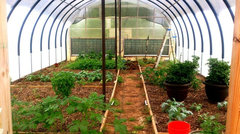 gh · More Info
gh · More Info My Greenhouse · More Info
My Greenhouse · More Info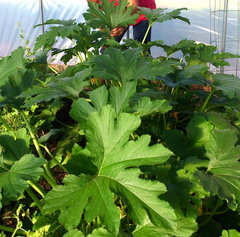 My Greenhouse · More Info
My Greenhouse · More Info
But nature said. "Ha, you think you have me beat! I have not yet begun to fight!!! Try a 126 mile and hour wind storm on for size you puny human". My Greenhouse · More Info
My Greenhouse · More Info
But did I give up? No! I am too dumb and stubborn for that. I rebuilt, and this time I reinforce to withstand the inland hurricane force winds. HA HA! My Greenhouse · More Info
My Greenhouse · More Info My Greenhouse · More Info
My Greenhouse · More InfoCarla
6 years agoIf you are looking to have mainly fruiting trees, you might consider the area around Fredericksburg. Although in the hill country, it does have soil and has many vineyards, orchards and veggie farms. My understanding is that some of the peach orchards have given away to vineyards, but that may not be totally true. Anyway, the climate there was suitable for peaches for many years. Can't say anything about apples or plums. The down side is that the area may be a little pricey.
The Jungle Explorer
Original Author6 years ago@daninthedirt Please read my post. SOIL is not my problem. It's EVERYTHING else. And yes, I have had soil test, water test and all the rest done. Please read and don't make assumptions. I have posted a lot of information already.
buttoni_8b
6 years agolast modified: 6 years agoWell, my 2¢ worth, I'd move to northeast Texas for gardening. My folks lived in Texarkana for years and my father's mother before him and ANYTHING would grow in their gardens. Mom and Dad filled my 18' chest freezer and two of their own every season. He would give food away, he could produce so much on his acre garden. Now he had a green thumb, mind you, but that red dirt over there really does produce. They had a number of fruit trees, but of course, they had to spray and baby those to get much before the birds did. Anywhere from Nacadoches on up to Texarkana is real piney woods and some real good farm land. I truly believe my dad could have fed half of Texarkana if he'd gardened more than 1 acre of his property. LOL
The Jungle Explorer thanked buttoni_8b1plantmaven
6 years agoI have friends that can grow very productive gardens and fruit trees in the area around Belmont, Luling and Gonzales, TX.
The Jungle Explorer thanked 1plantmavenThe Jungle Explorer
Original Author6 years ago@1plantmaven Thanks for the info. The Gonzales area is an area I have been looking.
I just want to add a little clarification to what I am looking for. I am not trying to harp on a technicality here, I just am trying to make a distinction. I am not asking the question, where in Texas CAN vegetables be grown? The simple fact is, with enough work and effort, I could grow a banana tree on the North Pole. What I am really trying to discover is where in Texas is it FAVORABLE for growing vegetables and fruit.
I am doing a lot of research. Let me give you some examples of what I am hearing from other areas of Texas. Take this example of a statement from someone in Southeast.
"I'm going to go against most of the people who responded and say it's very easy to grow vegetables in SE TEXAS. It's all about how much you invest into what you are trying to grow."
Many people in Southeast Texas had said that it was difficult there. This person said he was going to disagree with them and say it was EASY, but then he turns right around and says essentially, it takes a lot of investment to do it. So essentially, he says, "It's easy, if you are willing to work hard enough." I am not making fun of him, I am just demonstrating that he does not understand my question. I am not asking if it CAN be done. Obviously it CAN be done with enough INVESTMENT. He did however answer my question, in his own way, by telling me that it would require a lot investment to do it there.
So far, I have found no information from any part of Texas that would suggest that there is a favorable growing region in Texas. It seems that as large as Texas it, it does not really have a great region for growing Organic vegetable crops. So I am just looking for the best region now, even if that region is not that great.
Carla
6 years agoThe area around Gonzales, Luling and even Waelder is pretty interesting. I went through Waelder a few years ago and you would think you were in the middle of nowhere, especially in that area to the north, but you're really not that far from major cities. I know several people north of that area but they mostly have cattle. You may just have to prioritize what you really want to grow (fruit trees v. vegetables) and go from there. Good luck and let us know where you land.
The Jungle Explorer thanked Carlawantonamara Z8 CenTex
6 years agoI agree with Carla, that area from Sequien to Schulenberg with south and North of IH10 , Up to La grange has quite a bit of evidence of ranching, farming. Not big farms. Its a bit hilly. Soft round rises. grassland with immense Live oaks motes. I staid at a Ranch south of Amannsvile and they had an orchard that produced with minimal care. It was a shared among kids ranch so the garden was gone but boy , the soil looked easy. A bit of clay but much humous and loam in it naturally. Those cows were fat and sassy. I bet one could work a four season garden there easily. Luling smells like gas. It did get hit by Harvey so hurricanes are an issue but where in Texas is hurricanes not an issue except for West Texas and the Panhandle.
Is there a reason why you are not looking further than Texas?
The Jungle Explorer thanked wantonamara Z8 CenTexThe Jungle Explorer
Original Author6 years agoThanks. My whole family is in Texas and not about to leave, so Texas it must be. If I had my choice of where to live, I would live in the Mountains of Vera Cruz Mexico. It is amazing there. I have bought pure organic vegetables there that you would not believe. 20lb cabages, 3 foot red radishes, 3 pound carrots, etc. Cut a branch off a tree and stick in the ground and you have a new tree. It is that simple.
wantonamara Z8 CenTex
6 years agoIt is just a state line and a state of mind. Arkansas has good farmland. A friend of mine just bought a 160 acre farm outside of Hot Springs and is enjoying it heartily. She bought existing orchards , barns. fenced fields.
Lin barkingdogwoods
6 years agoIt seems the trees you want require some number of chill hours. I'd think it'd be easier to get those from Nacogdoches north to maybe Tyler, while still missing the really bad winters and being somewhat out of the main tornado alley. SFA in Nac even has some ongoing trials of kiwi vines.
The Jungle Explorer thanked Lin barkingdogwoodsT Ruth
2 years agoI know this is an old post, but did you ever relocate and how is this working for you?
Sarah Schmidt
2 years agoWhat was your decision? can you share the insights gained? I am looking to buy similar land in texas and am interested.
The Jungle Explorer
Original Author2 years agoThe Waco area seems to be a good region. People in that region seem to be more successful than most other areas.
buttoni_8b
2 years agolast modified: 2 years agoAuthor deleting. Doidn't realize I'd responded on this very old topic already.
Jasmine Bayliss
13 days agoI know this is an old post, but OP, did you decide on the Waco area? If so, how is your homestead doing?
The Jungle Explorer thanked Jasmine BaylissThe Jungle Explorer
Original Author13 days ago@Jasmine Bayless
I ended up moving to Gonzales., TX in 2022. I my new homestead is going good, but slow due to economic constraints.Jasmine Bayliss
13 days agoI read your posts and admire your fortitude for toughing it out on your old homestead for as long as you did! You really could write a book! I am reading Animal, Vegetable, Miracle by Barbara Kingsolver and it's inspiring me to want to try my hand at small-scale homesteading again. But I'm wondering if I need to move to a different state. I'm joking/not joking. I'm in the DFW area and I can barely get a vegetable garden to grow between pests and heat. My parents and siblings live in the Central Valley of CA and it seems like they stick plants in the ground, water, and they grow. Are you having better success with gardening in Gonzales?
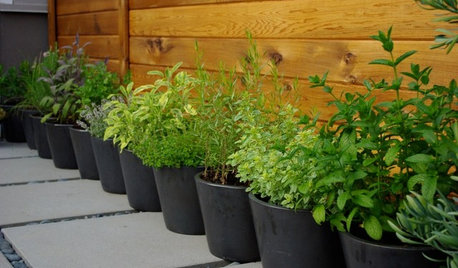

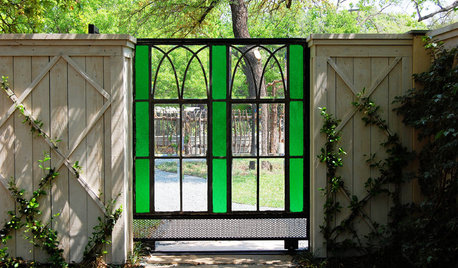

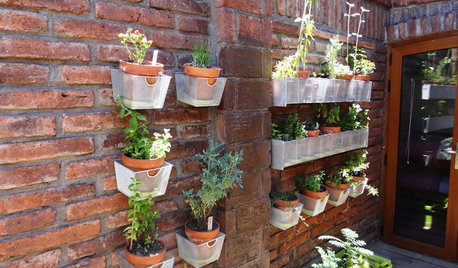
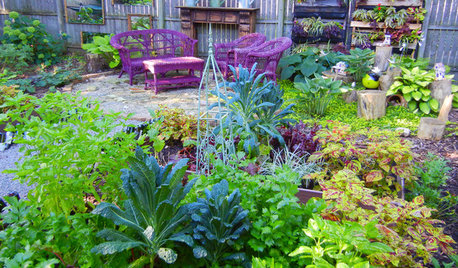
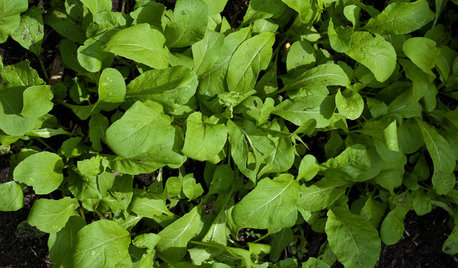
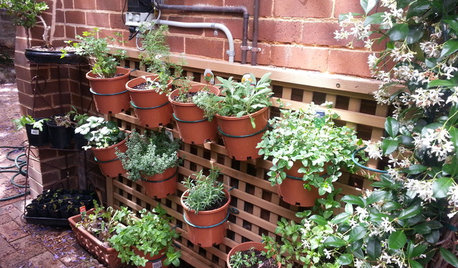

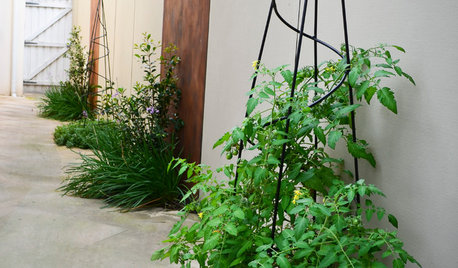







garybeaumont_gw